September 2009 Volume 25, Number 11
New York State Medicaid Update
The official newsletter of the New York Medicaid Program
David A. Paterson, Governor
State of New York
Richard F. Daines, M.D. Commissioner
New York State Department of Health
Deborah Bachrach, Deputy Commissioner
Office of Health Insurance Programs
In this issue....
Policy and Billing Guidance
Medicaid To Implement Automated Medicare Crossover in December 2009
New York Medicaid Does Not Reimburse Providers for Administrative Fees
Pharmacy Updates
Palivizumab (Synagis®) Added to Clinical Drug Review Program
Practitioner Reimbursement for Palivizumab (Synagis®)
Palivizumab (Synagis®) Guidelines for Children at Risk
Clinic Reimbursement for Palivizumab (Synagis®)
Intrauterine Devices (IUDs) for Managed Care Enrollees
Dental Update: Fluoride Varnish Applications Covered for Children Up To Seven
Medicare Reimbursement Guidelines
Medicare Parts B/D Coverage Flashpoints
All Providers
Smoking Cessation Advertisement
Quick Reference Guide
Medicaid to Implement Automated Medicare Crossover in December 2009
Return to Table of Contents
Effective December 3, 2009, New York Medicaid will begin receiving Medicare crossover claims directly from Medicare's Coordination of Benefits Contractor, (COBC), Group Health Inc., (GHI)., regardless of the claim's date of service. GHI, in its role as the COBC, will be sending crossover claims to New York Medicaid for all of New York State. Please note that claims submitted by pharmacies for payment of the Part B drug coinsurance and deductible are excluded from the crossover system.
What will be the process? Providers will bill claims for Medicare/Medicaid beneficiaries to Medicare. Medicare will then reimburse its portion to the provider and the provider's Medicare remittance will indicate that the claim will be crossed over to Medicaid. Medicare will send the claim data to GHI and they will submit the data to New York Medicaid for processing and payment of the deductible/coinsurance or co-pay amounts (also known as the Medicare Patient Responsibility). Medicaid will deny the claim if a claim is crossed over with no Patient Responsibility.
If the Medicare remittance does not indicate the claim has been crossed over to Medicaid, the provider should submit the claim directly to Medicaid. On the Medicare 835, the crossover indicator will be in loop 2100, NM1 segment NM101 = TT. NM103 will have a name indicating NY Medicaid. The exact NAME is unknown at present. The paper Medicare remittance will also include a crossover indicator.
Providers are urged to review their Medicare remittances for crossover indicators beginning December 1, 2009, to determine whether their claims have been crossed over to Medicaid for processing. Any claim that was indicated by Medicare as a crossover should not be submitted to Medicaid as a separate claim.
Important Guidelines:

- Claims submitted to Medicare must include a National Provider ID (NPI) that is also enrolled with NY Medicaid. If the NPI is not enrolled with NY Medicaid, the crossover claim will be rejected. If you have questions about a submitted enrollment application, please call our provider enrollment department at (800) 342-3005, option 4.
- The COBC will only submit claims to eMedNY that have been processed and paid by Medicare. Claims denied by Medicare will not be crossed over. Claims for services not covered by Medicare should continue to be submitted directly to Medicaid for processing.
- If a separate claim is submitted directly by the provider to Medicaid for a dual eligible client and the claim is processed before the crossover claim from GHI, both the provider submitted claim and the crossover claim will be reimbursed. However, the eMedNY system will subsequently void the provider submitted claim.
- If a separate claim is submitted directly by the provider after the crossover claim from GHI is paid, the provider submitted claim will deny as a duplicate claim.
- Medicare Part C (Medicare Managed Care) and Part D claims are not part of this process.
- Providers will not be able to void a claim that was crossed over by the COBC to Medicaid. The void must be submitted to Medicare. Medicare will void the Medicare payment and the void will be crossed over to Medicaid.
- Providers may submit an adjustment directly to Medicaid for adjusting a COBC crossover claim. The provider submitted adjustment will be processed like an ordinary adjustment.
Pricing and Payment:
- Pricing of crossover claims will be the Medicare approved amount derived by Medicaid minus the Medicare paid amount reported on the claim. The amounts used by Medicaid will be as they are received from the COBC.
- The coinsurance rule for payment of practitioner and DME claims will remain the same. Medicaid will pay 20% of the Medicare coinsurance amount (20% of the 20%).
- Locator codes will default to 003 if the zip+4 does not match information in the provider's Medicaid file.
- There are no changes to the content of Medicaid remittances (paper or 835 electronic) for COBC claims. All COBC claims will be paid with a Medicaid Transaction Control Number (TCN).
- Electronic remittances from Medicaid for COBC claims will be generated to the default ETIN when the default is set to electronic. If there is no default ETIN, the COBC claims will be reported to the provider on a paper remittance. Providers must complete the Electronic Remittance Request form at: http://www.emedny.org/info/ProviderEnrollment/Provider%20Maintenance%20Forms/Electronic%20Remittance%20Request%20Form.pdf to set-up an ETIN as a default. Please make sure to check the box in item #4.
Hospital inpatient COBC claims with Medicare Part A and Part B:
Inpatient hospital claims will be priced using the approved amount minus the paid amount. The number of coinsurance days and LTR days will not be used. Medicare Part A and B claims will be crossed over to Medicaid and paid as separate claims. Medicaid will pay the Part A deductible, coinsurance and LTR on one claim and the Medicare Part B patient responsibility will be paid on a separate claim where Medicare Part A covered the claim. Therefore two separate claims will be processed.
Enhanced Clinic Pricing:
The Enhanced Clinic Pricing that is applied to designated rate based institutional claims will still occur if a COBC crossover claim is transmitted to Medicaid with a valid rate code. DOH, OMRDD, OMH and FQHC clinics that are eligible for enhanced pricing must include the Medicaid rate code on any claims submitted to Medicare.
Medicaid will not apply enhanced clinic pricing to any COBC crossover claim that does not contain a rate code. Enhanced Clinic Pricing providers who bill Medicare via the 837 Professional transactions and cannot enter a rate code must resubmit the affected claim (s), with a valid rate code, to Medicaid as an adjustment.
If the provider submitted the claim to Medicare with a rate code and the rate code was not included on the COBC crossover claim, the provider must contact his/her Medicare payer to ensure the omission is corrected.
Enhanced pricing clinic claims will be eligible for the Medicaid retroactive rate adjustment process when the COBC claims are crossed over to Medicaid with a rate code. An enhanced pricing clinic claim submitted directly to Medicaid by the provider will also be eligible for retroactive rate adjustment processing.
Please visit http://www.emedny.org for updates on the Medicare Crossover Project and look for upcoming articles in the Medicaid Update. Questions regarding crossover claims should be directed to the eMedNY Call Center at (800) 343-9000.
New York Medicaid Does Not Reimburse Providers for Administrative Fees
Return to Table of Contents

New York Medicaid does not reimburse provider administrative fees for the following services provided to Medicaid enrollees:
- No Show/Missed Appointments: The federal Centers for Medicare and Medicaid Services (CMS) have prohibited state Medicaid programs from allowing providers to bill Medicaid enrollees for missed appointments.
- Medical Record Copy Fee: If it is a provider's practice to charge patients for copies of their medical records (private pay and third party insurance), providers may bill the Medicaid enrollee. Note: Sections 17 and 18 of the Public Health Law stipulate that the maximum amount that may be charged for paper copies of health records and/or patient information furnished pursuant to such sections may not exceed seventy-five cents per page.
- Form Completion Fee: New York Medicaid does not reimburse providers for the completion of forms (e.g., physicals). If it is your practice to charge all patients for completion of forms (private pay and third party insurance), you may bill the Medicaid enrollee.
Please contact the Bureau of Policy Development and Coverage at (518) 473-2160 with any questions.
PRACTITIONER REIMBURSEMENT FOR PALIVIZUMAB (SYNAGIS®)
Medicaid reimburses for Palivizumab when billed by Medicaid-enrolled Physicians and Nurse Practitioners.
Synagis is not available from the Vaccines For Children (VFC) Program and should be billed as follows:
- Use code 90378 - Respiratory syncytial virus immune globulin (effective beginning October 16, 2009).
- Submit the valid 11 digit NDC, quantity, and units on the claim.
- Insert the acquisition cost plus a two-dollar ($2.00) administration fee in the "amount charged" field.
- If administering Palivizumab outside the guidelines detailed on the following page, a paper claim with medical justification must be submitted.
For more information on practitioner billing, please review the Physician Provider Manual, Procedure Code and Fee Schedule, Procedure Codes Drugs, Section 3, Version 2009-1 (4/1/2009), available at:
www.emedny.org/ProviderManuals/Physician/index.html
Please call the eMedNY Call Center at (800) 343-9000 with any questions.
Palivizumab (Synagis®) Added to Clinical Drug Review Program
Return to Table of Contents
Effective September 15, 2009, Synagis® will be added to the Clinical Drug Review Program (CDRP). The goal of the program is to ensure that utilization of Synagis® occurs within the Respiratory Syncytial Virus (RSV) season and in children less than two (2) years of age at the onset of the RSV season.

- Prescriptions for Synagis® for children less than two (2) years of age at the onset of the RSV season may be dispensed and billed (on-line) between October 16th and March 31st without prior authorization.
- Prescriptions for Synagis® between April 1st and October 15th will require prior authorization.
- Prescriptions for Synagis® for children two (2) years of age and over at the onset of RSV season will require prior authorization.
To obtain prior authorization for Synagis,® the prescriber must contact the Clinical Call Center at (877) 309-9493 and follow the appropriate prompts.
Prescribers should be prepared to discuss their justification for use outside of the American Academy of Pediatrics guidelines and FDA approved indications. Faxed requests are not permitted.
For clinical information on bronchiolitis and use of Synagis,® please visit the NYS Department of Health Website at: http://www.nyhealth.gov/health_care/medicaid/program/prescriber_education/presc-educationprog
To access CDRP instructions and worksheets, please visit: https://newyork.fhsc.com/providers/CDRP_forms.asp
For clinical concerns or CDRP questions, please call (877) 309-9493.
For billing questions, please call (800) 343-9000.
For Medicaid pharmacy policy and operation questions, please call (518) 486-3209.
CLINIC REIMBURSEMENT FOR PALIVIZUMAB (SYNAGIS®)
Palivizumab is not available from the Vaccines For Children (VFC) Program and is, therefore, paid under Ambulatory Patient Groups (APGs).
When billing the cost and administration of Palivizumab for registered clinic patients under APGs:
- For the immune globulin, use CPT procedure code 90378, Respiratory syncytial virus, immune globulin (RSV-IgIM), for intramuscular use, 50mg, each. This will group to APG 416, Level III Immunization.
- For the administration, use CPT 90465 Immunization administration younger than 8 years of age (includes percutaneous, intradermal, subcutaneous or intramuscular injections) when the physician counsels the patient/family; first injection. This will group to APG 414, Level I Immunization & Allergy Immunotherapy.
- REMINDER: Freestanding Diagnostic and Treatment Centers not being reimbursed under the APG methodology should use their all-inclusive threshold rate code, 1610 (the drug and administration are included in the facility's rate).
Palivizumab (Synagis®) Guidelines for Children at Risk of Respiratory Syncytial Virus Infections
Return to Table of Contents
Palivizumab is an intramuscular injection used as prophylaxis for respiratory syncytial virus (RSV). It is used in certain high-risk infants and children with histories of prematurity (35 weeks or less), chronic lung disease (CLD), or congenital heart disease. RSV is a leading cause of bronchiolitis and pneumonia in infants. Palivizumab is usually administered in five (5) monthly doses throughout the RSV season, typically beginning in November or December. Palivizumab should not be used for the treatment of established RSV disease.
GUIDELINES:
The following guidelines are used to identify infants and children who should be considered for RSV prophylaxis. These guidelines have been adapted from the evidence-based recommendations for the prevention of RSV with Palivizumab in children less than 2 years of age published by the American Academy of Pediatrics (AAP):

- Children less than 24 months of age with hemodynamically significant cyanotic and acyanotic congenital heart disease.
- Infants and children less than 24 months of age with CLD of prematurity who have required medical therapy for CLD within the past six months before the anticipated start of the RSV season.
- Certain other neonates born prematurely, who are within the first year of life at the start of RSV season, with considerations for gestational age at birth, age at start of RSV season, and other risk factors.
References:
- American Academy of Pediatrics, Subcommittee on Diagnosis and Management of Bronchiolitis. Diagnosis and Management of Bronchiolitis. Pediatrics. 2006;118:1774-1793..
- McEvoy, G.K. (Ed.). (2009). American Hospital Formulary Service Drug Information. (pp. 785-788). Bethesda, MD: American Society of Health System Pharmacists.
- Meissner H.C., et al. Prevention of RSV Infection in High Risk Infants: Consensus Opinion on the Role of Immunoprophylaxis with Palivizumab, a Humanized Respiratory Syncytial Virus Monoclonal Antibody for Prevention of Respiratory Syncytial Virus Infection in High Risk Infants. Pediatric Infectious Disease Journal. 1999; 18 (3):223-231.
- Synagis® (Palivizumab) prescribing information. Medimmune, Inc., Rev. Date March 23, 2009.
- United States Pharmacopeia-Drug Information. (2007). Vol. 1. Drug Information for the Healthcare Professional (27th ed., pp. 2256-2258). Greenwood Village, CO: Thomson Micromedex.
Reminder: Coverage of IUDs for Medicaid Managed Care and Family Health Plus (FHPlus) Enrollees
to a Pharmacy with a Prescription for an IUD
Return to Table of Contents
IUDs are not available to Medicaid beneficiaries through a pharmacy, as the New York State Medicaid pharmacy formulary does not include IUDs, nor are the devices covered as a Medical/Surgical Supply.
The purchase, insertion, and removal of an IUD is included within the practitioner or clinic visit as a covered service through the enrollee's Medicaid managed care or FHPlus plan. In cases where the enrollee's plan does not cover family planning services (such as the New York State Catholic Health Plan, dba Fidelis Care New York), the IUD may be billed through eMedNY.
For additional information concerning managed care and fee-for-service coverage of IUDs, please review the December 2006 Medicaid Update article entitled, "Ordered Ambulatory Reimbursement for Intrauterine Devices, Ordered Ambulatory Fee-For-Service and Medicaid Managed Care" or visit the Department of Health Website at: http://www.nyhealth.gov/health_care/medicaid/program/update/2006/dec2006.htm.
Please call the Division of Managed Care at (518) 473-0122 with any questions.
Dental Update: Fluoride Varnish Applications Covered for Children up to Seven Years of Age
Return to Table of Contents
Effective October 1, 2009, a maximum of four (4) annual fluoride varnish applications will be covered for children from birth until 7 years of age. Physicians, Dentists, and Nurse Practitioners treating Medicaid fee-for-service beneficiaries will be reimbursed up to $30.00 per application.
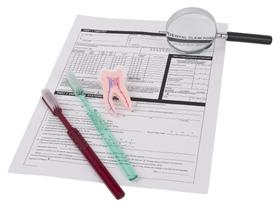
Clinic reimbursement under APGs will vary by peer group, however, will fall within the reimbursement range of $30.00. Reimbursement through Medicaid managed care plans will be in accordance with provider agreements.
Prior approval is NOT required under Medicaid fee-for-service. Medicaid managed care plans may establish procedures for prior approval.
Procedure code "D1206" should be used by all Provider types.
Please contact the Division of Provider Relations and Utilization Management, Dental Bureau at (800) 342-3005, option 2.
For questions concerning Medicaid managed care, please contact the Division of Managed Care at (518) 473-0122.
Medicare Part B and Part D Reimbursement Guidelines
Return to Table of Contents
Medicare Part B covers certain drugs including those used in chemotherapy and organ transplants; medical supplies, diabetic and ostomy supplies; and enteral products under certain circumstances.
When a drug, medical supply, or enteral formula meets the conditions for payment under Part B, the Medicare Part B fiscal intermediary must be billed first. Only after Medicare payment information is received may a claim be submitted for Medicaid reimbursement.

Pharmacies are urged to enroll in Medicare Part B. Information on Medicare enrollment can be found at the Center for Medicaid and Medicare Services, (CMS), Website at: http://www.cms.hhs.gov/MedicareProviderSupEnroll/.
Medicare Part D Program: Medicare Part D is a prescription drug program that provides coverage for most brand name and generic prescription drugs.
Medicare Part B versus Part D Coverage/Billing Issues:
A review of claims submitted to Medicaid for full benefit dual eligible enrollees indicates that a number of drugs covered by Medicare Part B have been inappropriately billed to Medicaid instead of to Medicare.
To ensure the appropriate billing to Medicare Part B or Part D, please follow these helpful tips:
- Prescribers can assist in the appropriate billing by including the patient diagnosis, location of administration if not at the patient's home (e.g., prescriber's office, nursing home), and the provider's UPIN (Unique Physician Identification Number) on the prescription.
- Pharmacists can assist by calling the Part D plan with necessary information in order to obtain a prior authorization, exception or billing override for drugs falling into these categories.
- CMS has provided the following chart that provides a quick reference guide for the most frequent Medicare Part B drug and Part D drug coverage determination scenarios.
For more information on Part B versus Part D coverage and billing please visit:
http://www.cms.hhs.gov/PrescriptionDrugCovGenIn/Downloads/PartBandPartDdoc_07.27.05.pdf and http://www.cms.hhs.gov/Pharmacy/Downloads/partsbdcoverageissues.pdf
Please review the June 2006 Medicaid Update for detailed guidance on Medicare Part B/Part D billing or visit: http://www.nyhealth.gov/health_care/medicaid/program/update/2006/jun2006.htm
Please contact 800-MEDICARE (800-633-4227) with any questions.
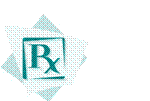
Medicare Parts B/D Coverage Flashpoints
Return to Table of Contents
The following reference guide was developed for the most frequent B/D coverage determination scenarios facing Part D plans and Part D pharmacy providers. It does not address all potential situations.
For more extensive discussion, please refer to the Medicare Part B vs. Part D Coverage Issues document available at: http://www.cms.hhs.gov/PrescriptionDrugCovGenin/downloads/PartBandPartDdoc_07.27.05.pdf.
| Part B Coverage Categories | Part B Coverage Description | Retail and Home Infusion Pharmacy Setting B/D Coverage | LTC Pharmacy Setting B/D Coverage | Comments |
|---|---|---|---|---|
| DURABLE MEDICAL EQUIPMENT (DME) SUPPLY DRUGS NOTE: Only available for beneficiaries residing in their "home" 1 | Drugs that require administration via covered DME (e.g. inhalation drugs, IV drugs "requiring" 2 a pump for infusion, insulin via infusion pump). 3 | Part B | Part D Because most LTC facilities are not considered a beneficiary's "home" 4 |
Blood Glucose Testing Strips and Lancets covered under Part B DME benefit are never available under Part D because they are not Part D drugs. |
| DRUGS FURNISHED "INCIDENT TO" A PHYSICIAN SERVICE | Injectable/intravenous drugs
| Part D Because by definition a pharmacy cannot provide a drug "incident to" a physician's service (Only a physician office would bill Part B for "incident to" drugs). | Part D Because by definition a pharmacy cannot provide a drug "incident to" a physician's service (Only a physician office would bill Part B for "incident to" drugs). | Part D plans should not implement pharmacy edits to determine B vs. D coverage for injectable/IV drugs only covered under Part B when furnished "incident to" a physician service. |
1In addition to a hospital, a SNF or a distinct part SNF, the following LTC facilities cannot be considered a home for purposes of receiving the Medicare Part B DME Benefit:
- A nursing home that is dually-certified as both a Medicare SNF and a Medicaid Nursing facility (NF);
- A Medicaid only NF that primarily furnishes skilled care;
- A non-participating nursing home (i.e. neither Medicare nor Medicaid) that provides primarily skilled care;
- An institution which has a distinct part SNF and which also primarily furnishes skilled care.
2The DMERCs determine whether or not an IV drug requires a pump for infusion.
3The DMERCs perform a medical necessity determination to ascertain whether a nebulizer or infusion pump is medically necessary for a specific drug/condition.
4If a facility does not meet the criteria in footnote 1, it would be considered a home, and Part B could cover the drugs.

Medicare Parts B/D Coverage Flashpoints
Return to Table of Contents
The following reference guide was developed for the most frequent B/D coverage determination scenarios facing Part D plans and Part D pharmacy providers. It does not address all potential situations.
For more extensive discussion, please refer to the Medicare Part B vs. Part D Coverage Issues document available at: http://www.cms.hhs.gov/PrescriptionDrugCovGenin/downloads/PartBandPartDdoc_07.27.05.pdf
| Part B Coverage Categories | Part B Coverage Description | Retail and Home Infusion Pharmacy Setting B/D Coverage | LTC Pharmacy Setting B/D Coverage | Comments |
|---|---|---|---|---|
| IMMUNOSUPPRESSANT DRUGS | Drugs used in immunosuppressive therapy for beneficiaries that received a transplant from Medicare approved facility and were entitled to Medicare Part A at time of transplant (i.e. "Medicare Covered Transplant"). | B or D: Part B for Medicare Covered Transplant Part D for all other situations | B or D: Part B for Medicare Covered Transplant. Part D for all other situations. | Participating Part B pharmacies must bill the DMERC in their region when these drugs are covered under Part B. |
| ORAL ANTI-CANCER DRUGS | Oral drugs used for cancer treatment that contain same active ingredient (or pro-drug) as injectable dosage forms that would be covered as:
| B or D: Part B for cancer treatment. Part D for all other indications | B or D: Part B for cancer treatment. Part D for all other indications. | Participating Part B pharmacies must bill the DMERC in their region when these drugs are covered under Part B. |
| ORAL ANTI-EMETIC DRUGS | Oral anti-emetic drugs used as full therapeutic replacement for IV anti-emetic drugs within 48 hours of chemo. | B or D: Part B within 48 hrs of chemo. Part D for all other situations |
B or D: Part B within 48 hrs of chemo. Part D for all other situations. |
Participating Part B pharmacies must bill the DMERC in their region when these drugs are covered under Part B. |

Medicare Parts B/D Coverage Flashpoints
Return to Table of Contents
The following reference guide was developed for the most frequent B/D coverage determination scenarios facing Part D plans and Part D pharmacy providers. It does not address all potential situations.
For more extensive discussion, please refer to the Medicare Part B vs. Part D Coverage Issues document available at: http://www.cms.hhs.gov/PrescriptionDrugCovGenin/downloads/PartBandPartDdoc_07.27.05.pdf.
| Part B Coverage Categories | Part B Coverage Description | Retail and Home Infusion Pharmacy Setting B/D Coverage | LTC Pharmacy Setting B/D Coverage | Comments |
|---|---|---|---|---|
| ERYTHROPOIETIN (EPO) | Treatment of anemia for person with chronic renal failure who is undergoing dialysis. | B or D: Part B for treatment of anemia for beneficiaries undergoing dialysis. Part D for all other situations | B or D: Part B for treatment of anemia for beneficiaries undergoing dialysis. Part D for all other situations | EPO may be covered under Part B "incident to" physician's service for other indications but a pharmacy would not be billing for "incident to" drugs. |
| PROPHYLACTIC VACCINES | Influenza: Pneumococcal; and Hepatitis B (for intermediate to high risk beneficiaries). | B or D: Part B for Influenza, Pneumococcal, & Hepatitis B (for intermediate to high risk). Part D for all others | B or D: Part B for influenza, pneumococcal & Hepatitis B (for high risk). Part D for all others | Vaccines given directly related to the treatment of an injury or direct exposure to a disease or condition are always covered under Part B. |
| PARENTERAL NUTRITION | Prosthetic benefit for individuals with "permanent" dysfunction of the digestive tract. If medical record, including the judgment of the attending physician, indicates that the impairment will be long and of indefinite duration, the test of permanence is met. | B or D: Part B if "permanent" dysfunction of digestive tract. Part D for all other situations | B or D: Part B if "permanent" dysfunction of digestive tract. Part D for all other situations | Part D does not pay for the equipment/supplies and professional services associated with the provision of parenteral nutrition or other Part D covered infusion therapy. |
Preferred Drug Program Update
Return to Table of Contents
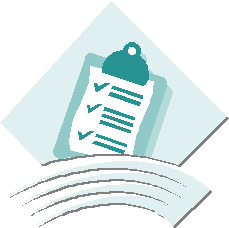
The New York State Medicaid Pharmacy and Therapeutics Committee (P&TC) recently conducted a review of 16 drug classes subject to the Preferred Drug Program (PDP). Effective October 21, 2009, prior authorization requirements will change for some drugs in the following four drug classes:
- CEPHALOSPORINS - THIRD GENERATION
- NON-STEROIDAL ANTI-INFLAMMATORY DRUGS (NSAIDS) - OPHTHALMIC
- PHOSPHATE BINDERS/REGULATORS
- SEROTONIN RECEPTOR AGONISTS (TRIPTANS)
In addition to these changes, the New York State Medicaid Clinical Drug Review Program (CDRP) is expanding to include Topical Immunomodulators (Protopic® and Elidel®).
On or after October 21, 2009, prior authorization will be required when prescribing a preferred Topical Immunomodulator as the entire therapeutic class will be subject to the CDRP.
To obtain prior authorization for non-preferred drugs or any drug from the Topical Immunomodulator class, please contact the Clinical Call Center at (877) 309-9493 and follow the appropriate prompts.
The current Preferred Drug List (PDL), which includes a complete listing of preferred and non-preferred drugs for each of the drug classes currently subject to the PDP is available at:
https://newyork.fhsc.com/downloads/providers/NYRx_PDP_PDL.pdf.
Additional information, such as a "Quick List" of only preferred drugs and updated prior authorization forms, is available at each of the following Websites:
http://www.nyhealth.gov or http://www.eMedNY.org or https://newyork.fhsc.com
Prescribing preferred drugs requires no further action on your part, unless otherwise indicated on the PDL or Quick List.
For clinical concerns or preferred drug program questions, contact (877) 309-9493.
For billing questions, contact the eMedNY Call Center at (800) 343-9000.
For Medicaid pharmacy policy and operations questions, contact (518) 486 -3209.
Your Patients Are Listening
Return to Table of Contents
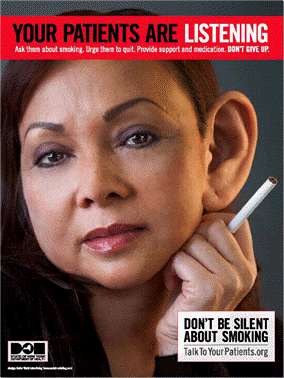
By providing counseling, pharmacotherapy, and referrals, you can double your patients' chances of successfully quitting. For more information, please visit www.talktoyourpatients.org or call the NY State Smokers' Quitline at 1-866-NY-QUITS (1-866-697-8487).
Do you suspect that a Medicaid provider or an enrollee has engaged in fraudulent activities?
Return to Table of Contents
Call: 1-877-87FRAUD or (212 417-4570)
Your call will remain confidential.
You can also complete a Complaint Form online at:
www.omig.state.ny.us
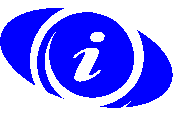
Quick Reference Guide
Return to Table of Contents
Office of the Medicaid Inspector General:
http://www.omig.state.ny.us or call (518) 473-3782 with general
inquiries or 1-877-87FRAUD with suspected fraud complaints or allegations.
This contact information can also be used for Provider Self-Disclosures.
Questions about billing and performing MEVS transactions?
Please contact eMedNY Call Center at: (800) 343-9000.
Provider Training
To sign up for a provider seminar in your area, please enroll online at:
http://www.emedny.org/training/index.aspx
For individual training requests, call (800) 343-9000 or email: emednyproviderrelations@csc.com
Enrollee Eligibility
Call the Touchtone Telephone Verification System at any of the numbers below:
(800) 997-1111 (800) 225-3040 (800) 394-1234.
Address Change?
Questions should be directed to the eMedNY Call Center at: (800) 343-9000.
Fee-for-Service Providers
A change of address form is available at:
http://www.emedny.org/info/ProviderEnrollment/index.html
Rate-Based/Institutional Providers
A change of address form is available at:
http://www.emedny.org/info/ProviderEnrollment/index.html
Comments and Suggestions Regarding This Publication?
Please contact the editor, Kelli Kudlack, at:
medicaidupdate@health.state.ny.us
Medicaid Update is a monthly publication of the New York State Department of Health containing information regarding the care of those enrolled in the Medicaid Program.